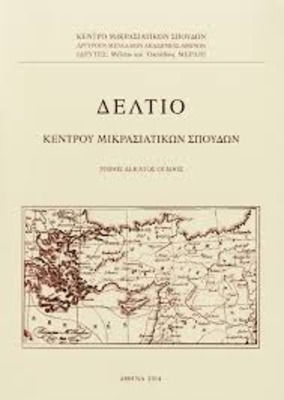Εκκλησιαστικά ασημικά από την Κωνσταντινούπολη και ο πατριαρχικός θρόνος του Ιερεμία Β'
Part of : Δελτίο Κέντρου Μικρασιατικών Σπουδών ; Vol.7, 1988, pages 51-73
Issue:
Pages:
51-73
Parallel Title:
Greek church silver and furniture from Constantinople
Section Title:
Articles
Author:
Abstract:
16th century Orthodox liturgical silver displays a hybrid Christian-Islamiccharacter exemplified in the persistence of the Byzantine iconographie tradition,in the use of western European shapes and techniques, and in theadoption of Ottoman decorative styles. Two characteristic examples of thishybrid style are a bowl stamped with the tugra of Bayezid the II (fig. 1) anda jug with animal decoration and christological symbolism (fig. 8). Both canbe attributed to the Balkans or at any rate to a Christian tradition whichwas formative for Ottoman silverware.To the same tradition we can ascribe two more silver objects, a chalice (fig.4) donated by Patriarch Theoleptos the II (1585-1587), and an enamelled bowl(fig. 6) inscribed with the name of the Metropolitan of Euripos, Laurentios(manufactured in 1580 or 1587). Their particular interest, however, lies in thatthey can be securely attributed to Greek craftmanship in Constantinople andreflect the cultural milieu in which they were produced —the OecumenicalPatriarchate.In the second half of the 16th century, the Oecumenical Patriarchate was inthe process of realising and asserting its secular power towards both the Ottomanauthorities and its Christian flock. In this process Patriarch Jeremia IIplayed the most important role. His restoration of the patriarchal church andpremises was an ambitious project worthy of an Oriental potentate. Today,only his patriarchal throne survives (fig. 8). Dated 1577, it has a Byzantineshape, Ottoman inlaid decorative designs and long inscriptions in verse praisingwith Byzantine eloquence the secular powers of the Patriarch.




